Table of contents
- Product test: airbag systems for motorcycle clothing (with video) Airbag systems and jackets in the crash test
- Result
- Manufacturer reactions
- New airbag systems
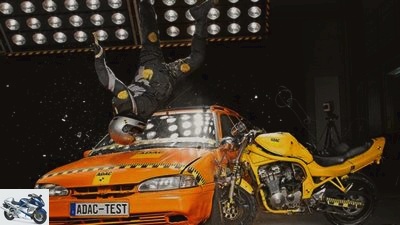
ADAC
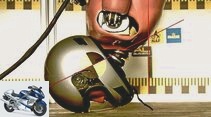
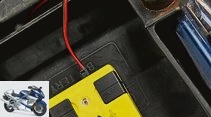
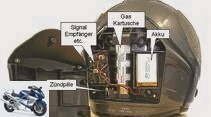

14th pictures
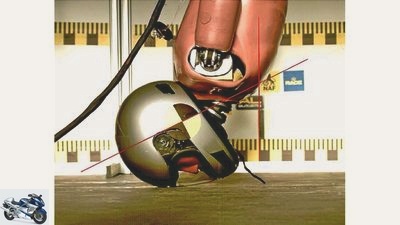
ADAC
1/14
Neck load test: This is how it looks when the dummy swings with the upper edge of the helmet against the ground without additional neck protection. A wide overstretching (hyperextension) can lead to the fact that the spinous processes of the vertebrae stick together and break.
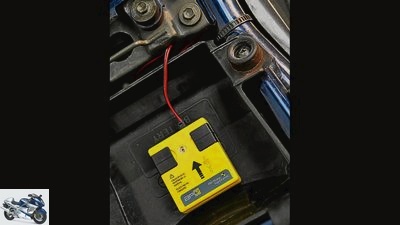
ADAC
2/14
APC: The control unit is mounted on the motorcycle with the arrow pointing in the direction of travel and is connected to the battery.
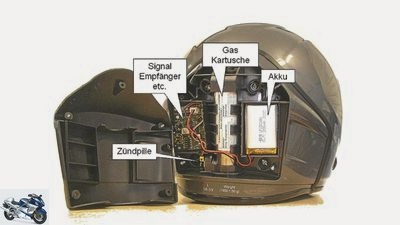
ADAC
3/14
When the motorcycle impacts, the system housed in the rear of the helmet is triggered electronically.

ADAC
4/14
D.P.I Safety: The opening of the gas cartridge fills the airbag…
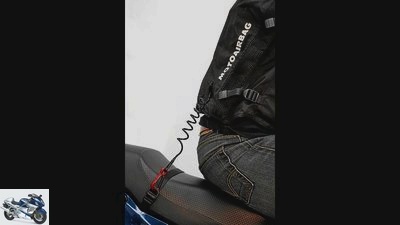
ADAC
5/14
… as soon as the rip cord ensures that it is pierced in the event of an accident.
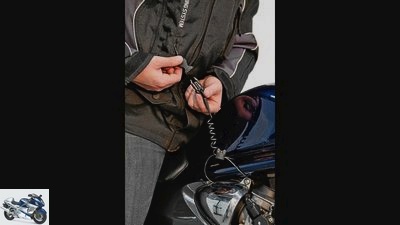
ADAC
6/14
Hit Air / IXS: When the driver gets on the motorcycle, he has to connect the rip cord attached to the frame, for example, to the release mechanism of the airbag jacket using a quick release.
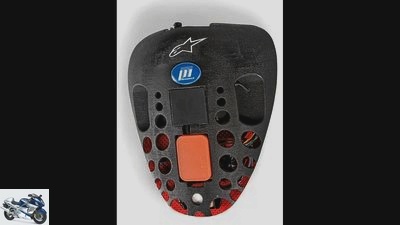
manufacturer
7/14
Other airbag systems: From Alpinestars – The fully electronically controlled airbag system with a central computer in the back hump is currently still in the testing phase in racing. The market launch is planned for the end of 2011.

manufacturer
8/14
Brembo: The “Life Jackets” of the brake specialist are designed primarily for scooter riders in city traffic. It is released via a ripcord. Women’s and men’s models from 390 euros.
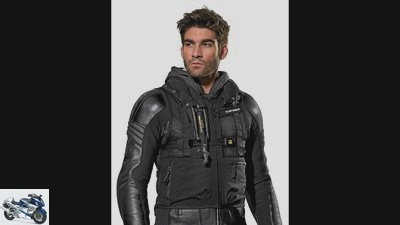
manufacturer
9/14
Spidi: The DPS system is also triggered by a rip cord. Available as a Venture textile jacket (EUR 689.90).

manufacturer
10/14
Also from Spidi is the leather suit T2 (1499.90 euros, above), as a Neck DPS vest.
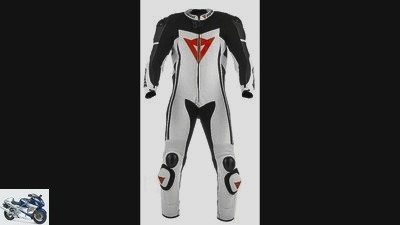
manufacturer
11/14
Dainese: D-Air Racing emerged from the tough testing phase with MotoGP world champion Jorge Lorenzo: a leather one-piece for hobby racers with an integrated airbag and complete control unit in the back hump. Price: 2700 euros.
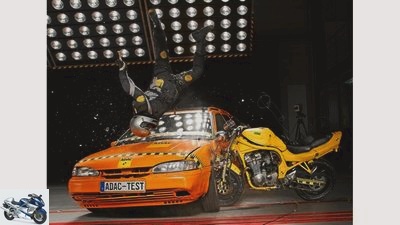
ADAC
12/14
The ADAC is testing whether airbags in motorcyclist equipment provide more safety. In this test, MOTORRAD shows what the tests have found. You can find the pictures here. In this picture: The “Full-scale crash test” at around 50 km / h is used to determine processes and loads in a classic intersection accident. The corresponding information forms the basis for the individual tests in the ADAC technology center.
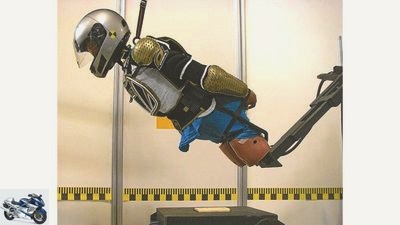
ADAC
13/14
Chest load test: The 78 kilogram dummy (in the picture with a motocross protector jacket serving as a reference) falls from a height of 73 centimeters. The two tested airbag jackets reduce the chest indentation by almost 25 percent.
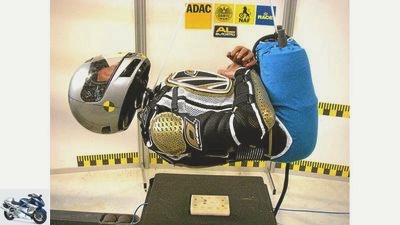
ADAC
14/14
Back load test: The dummy falls from 26 and 64 centimeters onto a force plate. This corresponds to an impact speed of 8 or 12.8 km / h. It doesn’t sound like much, but it is an enormous burden. The inflatable protectors significantly reduce the forces acting on them.
counselor
technology & future
Product test: airbag systems for clothing
Product test: airbag systems for motorcycle clothing (with video)
Airbag systems and jackets in the crash test
The ADAC tested very extensively whether airbags in motorcyclist equipment can provide more safety. MOTORRAD also looks to the future and shows what is happening in the airbag scene.
Jorg Lohse, Klaus Herder
02/03/2011
\ n<div class = \&# 34; v-A_-custom-html v-A_-custom-html – video \ “>\ n<iframe title = \&# 34; YouTube video player \&# 34; width = \&# 34; 500 \&# 34; height = \&# 34; 311 \&# 34; src = \&# 34; https: //www.youtube.com/embed/8TFHOI6IazI \&# 34; frameborder = \&# 34; 0 \&# 34; allowfullscreen></ iframe>\ n</ div>\ n</ div>\ n&# 34;,&# 34; consentGroup&# 34;: null}”>
Do good and write about it – the motorcycle enthusiastic engineers from the ADAC technology center in Landsberg am Lech can often only partially implement this motto; because between club news and advertisements remains in the club organ, which has been distributed almost 14 million times “ADAC – motorwelt” only little space to show in full detail that the technicians of the automobile club also care intensively about the safety of motorcyclists. For example, in autumn 2010, when ADAC man Andreas Rigling, a 27-year-old graduate engineer in vehicle technology, examined innovative protective clothing together with colleagues.
Four airbag systems (built into a vest, two jackets and a helmet) as well as a passive support device, which is supposed to prevent overstretching of the cervical spine, had to show whether they could reduce the risk of injury in specific accident situations. In order to be able to simulate processes as realistic as possible in the individual tests, Marauder driver Rigling had a dummy with a 50 km / h fast Suzuki Bandit 600 slammed into the side of a standing Ford Mondeo in preliminary tests.
Buy complete article

Product test: airbag systems for motorcycle clothing (with video)
Airbag systems and jackets in the crash test
6 pages) as PDF
€ 2.00
Buy now
The situation corresponds to a typical accident at an intersection in which the motorcyclist is first thrown onto and then over the car and – in this specific case – comes to a rest about seven meters from the collision point. From the first contact between the front wheel of the motorcycle and the other party involved in the accident and the rough landing on the asphalt, only a second passes. This range can be even shorter in other accident situations. So there is very little time left for the airbag systems to be fully inflated.
The deployment and inflation of the airbags installed in the products tested cannot be compared with car arbags. Pyrotechnic gas generators in cars ensure that the air bags are fully inflated in 20 to 30 milliseconds. With car airbags, the air escapes immediately when the occupant impacts, and the entire airbag can then be replaced. Integrating a gas generator in protective motorcycle clothing is currently hardly feasible; the high temperature development is another problem.
Therefore, in motorcycle equipment equipped with an airbag, CO2 cartridges are used, the needles of which are pierced when the trigger mechanism is activated. In the case of vests and jackets, this is done using a rip cord that connects the rider and motorcycle – a system that has the advantage of being reusable, but is not the ultimate solution when it comes to release time, as tightening the rip cord costs valuable time. The contactless, electronic triggering of the gas cartridge of the airbag helmet works much more elegantly (and in case of doubt faster). A control unit mounted on the motorcycle gives the impulse for triggering. This works extremely well when the machine hits an obstacle and the driver is still in the saddle at the time. But things have their pitfalls when man and machine separate from each other before a crash occurs – i.e. with classic slips or highsiders. In the worst case, the driver is already hanging under the guardrail while his machine is still sliding – and the airbag has not yet triggered due to a lack of crash information.

ADAC
Graduate engineer Andreas Rigling, 27, has been working as a project manager in passive safety at the ADAC crash facility in Landsberg am Lech since 2009. He also rides a motorcycle privately.
The crash tests simulated by the ADAC with sled tests, the inflation tests, drop tests on a force plate, neck load tests, the protector test according to DIN 1621-2 and, last but not least, the drop tests that test the chafing behavior of the airbags show that there is still a lot of potential for development and improvement are.
The airbag vest, which is the only product, offers the best all-round properties “good utility” deserves, but could still improve significantly in terms of comfort. The two jackets weaken when it comes to the release time (especially the IXS model); and the airbag helmet has a very limited protection area (only neck), is not very convincing in handling and – to put it carefully – looks quite a bit of getting used to. The second neck protection tested has no problems with the duration of the release due to the system – it is constant “in action” -, but that is exactly what is his undoing in normal everyday motorcycle life. The uncomfortable handling and the restriction in mobility (keyword “Look over the shoulder”) may not be a problem in competitive use (motocross or similar), but are hardly acceptable in public traffic.
But despite all the criticism, all of the products thankfully tested by the ADAC deserve praise for the simple reason that they are the first, future-oriented steps towards improving passive safety. If the best components can be put together in the future, this could result in systems that would make motorcycling even safer.
Clothing test video:
\ n<div class = \&# 34; v-A_-custom-html v-A_-custom-html – video \ “>\ n<iframe title = \&# 34; YouTube video player \&# 34; width = \&# 34; 500 \&# 34; height = \&# 34; 311 \&# 34; src = \&# 34; https: //www.youtube.com/embed/gan0aBbZvnQ \&# 34; frameborder = \&# 34; 0 \&# 34; allowfullscreen></ iframe>\ n</ div>\ n</ div>\ n&# 34;,&# 34; consentGroup&# 34;: null}”>
Result
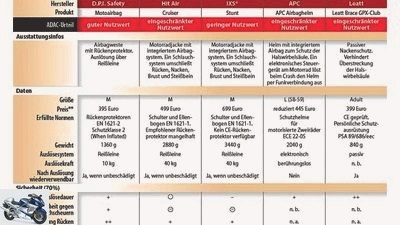
archive
The result table of the protection systems.
Manufacturer reactions
APC airbag helmet: In Germany, the Polo shop and mail order chain only sells small remnants of the helmet, which once cost € 899, for € 69.95. Biggest marketing problem according to Polo: “Unfortunately, APC is completely unknown in the motorcycle market.”
D.P.I .: In Germany, the vest is still available from Touratech. According to Touratech, no modifications have been made or announced after the test.
Hit Air Cruise: The jacket is now available in all sizes again, and the price is still 499 euros. According to German sales, the model has been redesigned with an abrasion-resistant upper material and sealed zippers. In 2012 there will be a completely new successor model.
IXS stunt: The jacket has been in the range since 2001. In 2011 remaining stocks in all sizes are still available, the recommended price is still 699 euros. A successor model is being planned, but no further information is available yet.
Leatt Brace: According to the German distributor Hostettler, the tested model GPX Club will be replaced by the successor Club 2 (RRP 399 euros). Modified upholstery should make Club 2 more comfortable to wear. Leatt now also offers breastplates and protector vests for crossers that can be combined with the neck protector. While the GPX series is still designed for off-road / cross use, the new STX generation (from 399 euros) should be specially geared to the needs of everyday / road use.
New airbag systems
<!– ESI FOR ads.BannerGallery / irelements / esielement / eyJwYWdlIjoiL3N0YXJ0c2VpdGUvIiwibGF5b3V0IjoiYXJ0aWNsZSIsImVsZW1lbnQiOiJhZHMuQmFubmVyR2FsbGVyeSIsImlyQ29uZmlnIjoiMTQ3MzY0MDAiLCJwYXJhbXMiOnt9LCJpc01vYmlsZSI6ZmFsc2V9 –> <!– CACHEABLE –>&# 34;,&# 34; rectangle&# 34 ;: “<!–# include virtual = \&# 34 / irelements / esielement / eyJwYWdlIjoiL3N0YXJ0c2VpdGUvIiwibGF5b3V0IjoiYXJ0aWNsZSIsImVsZW1lbnQiOiJhZHMuUmVjdGFuZ2xlR2FsbGVyeSIsImlyQ29uZmlnIjoiMTQ3MzY0MDAiLCJwYXJhbXMiOnt9LCJpc01vYmlsZSI6ZmFsc2V9 \&# 34; –> <!– ESI FOR ads.RectangleGallery / irelements / esielement / eyJwYWdlIjoiL3N0YXJ0c2VpdGUvIiwibGF5b3V0IjoiYXJ0aWNsZSIsImVsZW1lbnQiOiJhZHMuUmVjdGFuZ2xlR2FsbGVyeSIsImlyQ29uZmlnIjoiMTQ3MzY0MDAiLCJwYXJhbXMiOnt9LCJpc01vYmlsZSI6ZmFsc2V9 –> <!– CACHEABLE –>&# 34;,&# 34; sky&# 34 ;: “<!–# include virtual = \&# 34 / irelements / esielement / eyJwYWdlIjoiL3N0YXJ0c2VpdGUvIiwibGF5b3V0IjoiYXJ0aWNsZSIsImVsZW1lbnQiOiJhZHMuU2t5R2FsbGVyeSIsImlyQ29uZmlnIjoiMTQ3MzY0MDAiLCJwYXJhbXMiOnt9LCJpc01vYmlsZSI6ZmFsc2V9 \&# 34; –> <!– ESI FOR ads.SkyGallery / irelements / esielement / eyJwYWdlIjoiL3N0YXJ0c2VpdGUvIiwibGF5b3V0IjoiYXJ0aWNsZSIsImVsZW1lbnQiOiJhZHMuU2t5R2FsbGVyeSIsImlyQ29uZmlnIjoiMTQ3MzY0MDAiLCJwYXJhbXMiOnt9LCJpc01vYmlsZSI6ZmFsc2V9 –> <!– CACHEABLE –>&# 34;}}” ga-track-vis =”article.gallery.inline.vis” class =”v-A_-article__inline-container”>
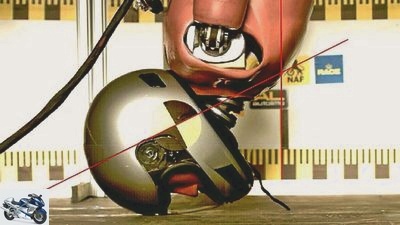
ADAC




14th pictures
Pictures: Product test: Airbag systems for motorcycle clothing (with video)
go to Article
To home page
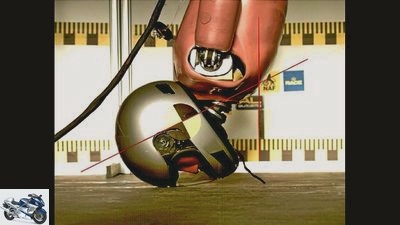
ADAC
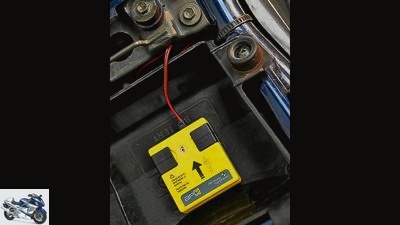
ADAC

ADAC
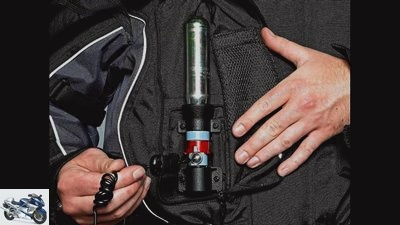
ADAC
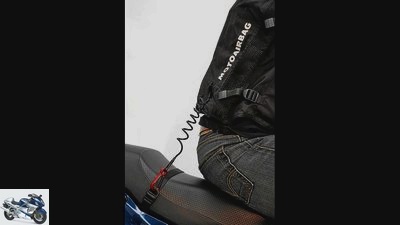
ADAC
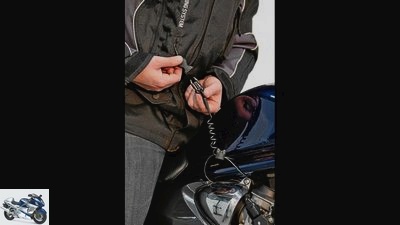
ADAC
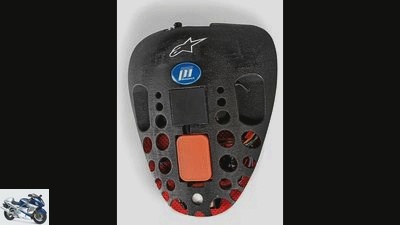
manufacturer

manufacturer
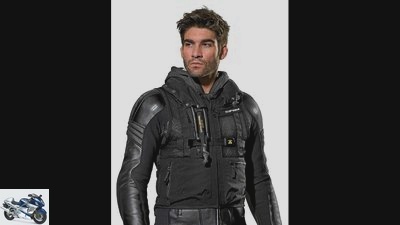
manufacturer

manufacturer
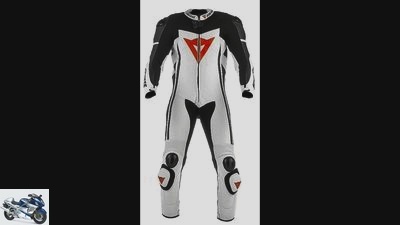
manufacturer
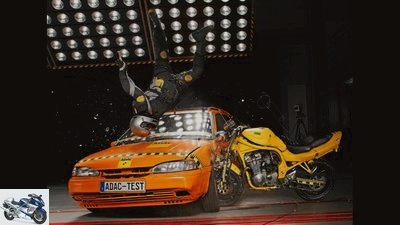
ADAC
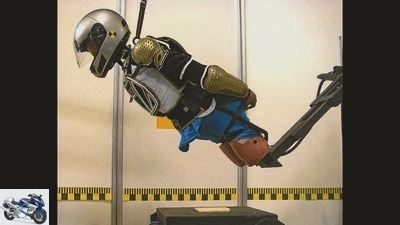
ADAC
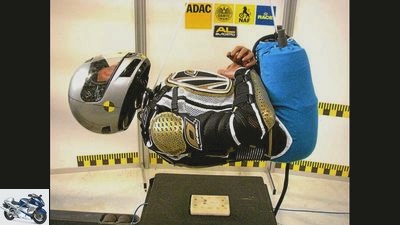
ADAC
1/14
The big airbag initiative for the current season 2011 is mainly due to well-known Italian companies. German outfitters are still noticeably covered. The airbag system from Dainese being. However, combined with investments in a complex and time-consuming development. The first attempts to do this were made at the end of the 1990s. What is particularly interesting is how the Dainese system has evolved over a decade. Wireless activation was planned from the start (see interview) and remains the main distinguishing feature compared to competing systems. But the shape has changed drastically. When the project was presented at Intermot 2002, the Dainese airbag still had similarities with a full-size airbag, as we know it from the car – including a comparable pyrotechnic filling process. Today, as with other airbag systems, gas cartridges have prevailed. The next provider will be Alpinestars offer a wireless system.

Dainese
Dainese manager Vittorio Caffagi.
“Cable systems are still working too slowly”
Dainese manager Vittorio Caffagi in conversation with MOTORRAD about the opportunities and risks of airbag systems.
? Dainese has been researching and developing airbags for motorcyclists for around ten years. That sounds like big problems in development?
! With D-Air we have developed a protection that has not existed before. D-Air is an intelligent, intelligent concept that protects the driver in a way that is not possible with conventional protective measures. At the same time, however, we had to ensure that our system worked reliably at all times. To this end, we have looked for solutions that are much closer to the motorcycle and automotive development sector than the manufacture of technical protective clothing – our actual core business for over 40 years.
? For many years there have been airbag systems that are triggered by a rip cord. What can the electronically controlled Dainese airbag do better??
! The fact that the airbag has to be triggered without a cable was an integral part of the D-Air project from the start. No suitable connection point on the motorcycle would have been found for the racing airbag. In addition, the cable connection restricts the racing driver’s movements and flutters at high speeds. Above all, however, cable systems do not trigger if the driver stays on the vehicle if he falls. For the street version, the extremely short activation phase must be taken into account. For the impact accidents that are typical in everyday life, the activation window is a maximum of 80 milliseconds. According to our knowledge, cable systems still work too slowly and cannot protect when it really matters: at the first impact. The activation time for the D-Air Street is therefore only 45 milliseconds, the racing version is activated within 15 milliseconds.
? The leather suit “D-Air Racing” is designed for the racetrack. Should therefore not be worn in everyday life?
! It is important that Dainese has two airbag versions: the D-Air Racing for the racetrack and the D-Air Street for normal street use. Both systems are tailored to the typical accident scenarios: low and high sider on the racetrack, impact and slipping on the road. If you fall on the road with D-Air Racing and the dynamics correspond to those of an accident on the racetrack, the system would of course be reliably triggered.
? In the automotive sector, the airbag has reduced the risk of injury and significantly reduced the severity of injuries. Something similar can be expected from motorcycle airbags?
! D-Air must be viewed in conjunction with existing protectors. There is still no final or uniform standard or norms that define the criteria for motorcycle airbags. However, if our system is tested according to the current standards for protectors, the energy acting on the driver in the event of a fall can be reduced by more than 90 percent compared to conventional protector systems.
Related articles
-
Buying advice for airbag systems for motorcyclists
Alpinestars 18th pictures Photos: alpinestars 1/18 More than just (hot) air: airbags can prevent greater damage to life and limb in the event of an…
-
Product test: accessory silencer for BMW S 1000 RR
Photos: BMW accesories Exhaust & silencer Product test: accessory silencer for BMW S 1000 RR Product test: exhaust systems for BMW S 1000 RR What do…
-
Market overview 2018 – Airbag clothing for motorcyclists
Alpinestars 35 pictures Alpinestars 1/35 Alpinestars Viper Tech-Air prices: 399.95 euros plus Street Air vest 1199.95 euros. Alpinestars 2/35 Alpinestars…
-
Follow-up report product test Louis clothing combination
Monika Kuhlemann Club Follow-up report product test Louis clothing combination Review product test Louis Yes, that fits! Monika Kuhlemann and Thomas…
-
Airbag vests put to the test: models from Alpinestars, Dainese and Held
ADAC. 5 pictures ADAC. 1/5 The ADAC has intensively tested three airbag vests for motorcyclists. ADAC. 2/5 Also there was the Alpinestars Tech-Air…
-
Cheapest motorcycle clothing in the test
Artist clothing Station wagons, jackets & pants Cheapest motorcycle clothing in the test Cheapest motorcycle clothing in the test Attractants Discounters…
-
Product test: top-class sports helmets in comparison
2snap clothing Helmets Product test: top-class sports helmets in comparison Comparative test sports helmets of the upper class Well protected with the…
-
Product test full face helmets with sun visor
Photo: Herder 51 pictures mps photo studio 1/51 Airoh Movement, MOTORRAD verdict: very good (motorcycle purchase tip). mps photo studio 2/51 HJC RPHA ST,…
-
Lashing systems in the product test
fotolia 27 pictures mps photo studio 1/27 BGS Spannband Doppelpac, MOTORRAD judgment: satisfactory. Dentges 2/27 Joubert clamping rubber Safe with clever…
-
Product test: exhaust systems for the Kawasaki Z 1000
jkuenstle.de accesories Exhaust & silencer Product test: exhaust systems for the Kawasaki Z 1000 Product test: exhaust systems for the Kawasaki Z 1000…